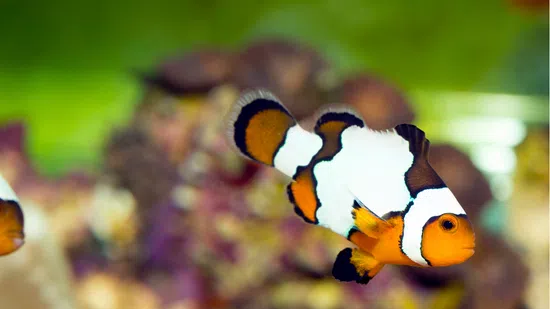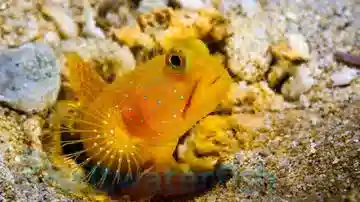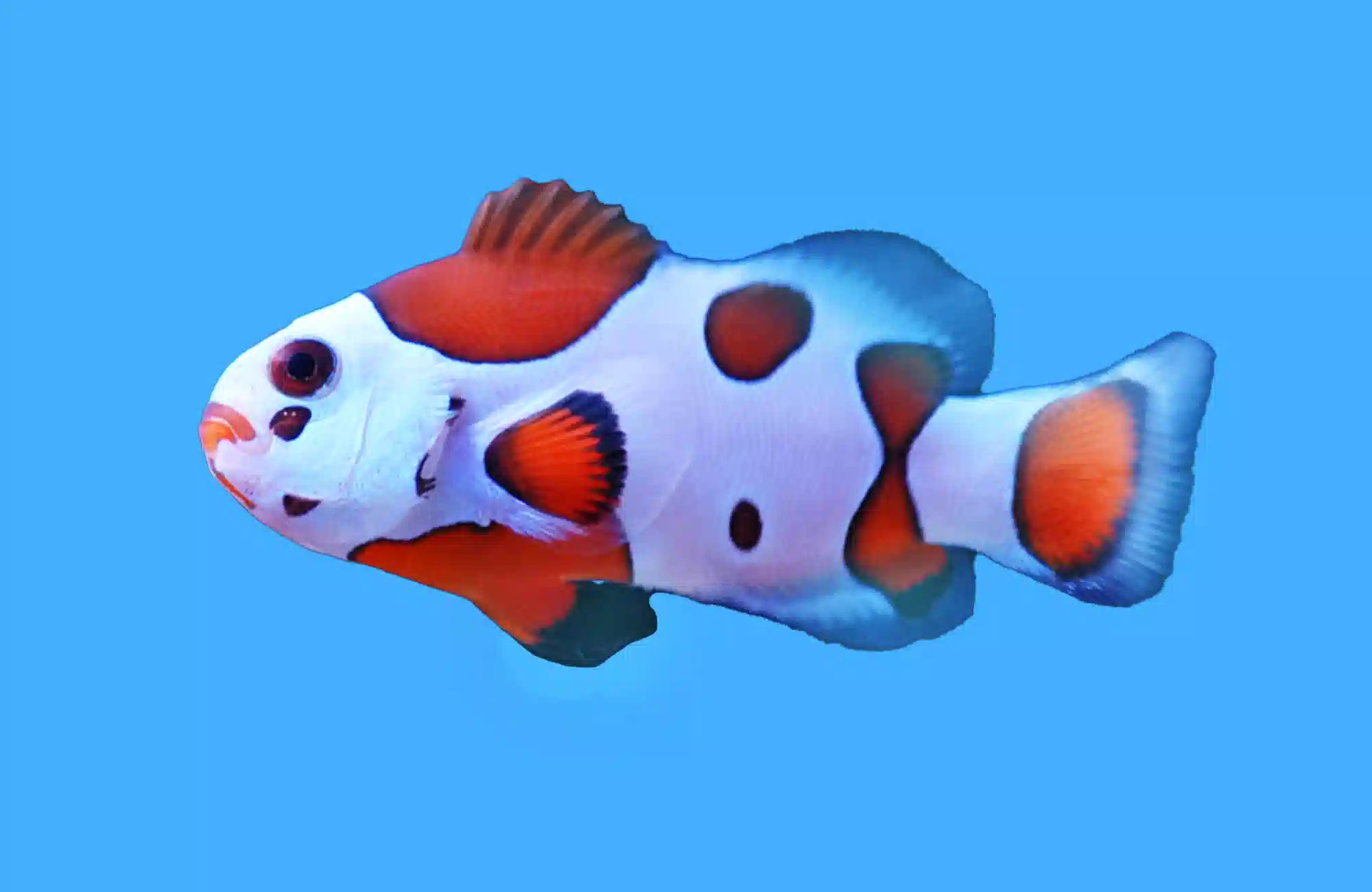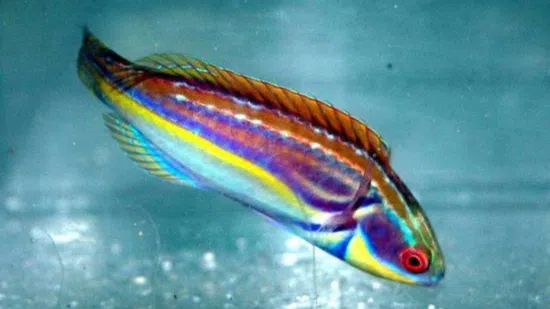Labout's Fairy Wrasse - Melanesia
Cirrhilabrus laboutei
(7 Reviews)
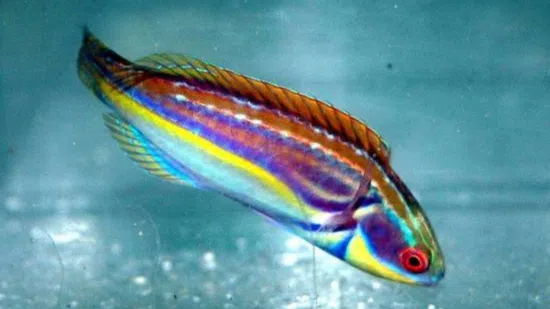
Labout's Fairy Wrasse - Melanesia
Cirrhilabrus laboutei
(7 Reviews)
{{ item.name }}
Size: {{ item.extra_field_3 }}
${{ getFormattedPrice(item.saleprice) }} ${{ getFormattedPrice(item.price) }}
To join the waiting list, click here
Free Shipping
With
$199.00
or more in Marine Life.
More details...
Labout's Fairy Wrasse - Melanesia Care Facts
| Care Level: | Moderate |
|---|---|
| Temperament: | Peaceful |
| Diet: | Carnivore |
| Reef Safe: | Yes |
| Minimum Tank Size: | 75 Gallons |
| Max Size: | 6 inches |
Labout's Fairy Wrasse (Cirrhilabrus laboutei): A Practical Wrasse for Saltwater Marine Aquariums
The Labout's Fairy Wrasse (Cirrhilabrus laboutei) is a captivating marine species that can significantly add to your saltwater marine aquarium. This guide provides essential facts about Labout's Fairy Wrasse, its care requirements, and why it can be a valuable choice for your aquarium.
Habitat and Adaptability for Labout's Fairy Wrasse
Labout's Fairy Wrasses are native to the Western Pacific Ocean, found explicitly around the reefs of Fiji and Tonga. They prefer coral-rich areas, lagoons, and reef slopes.
Reef Safety and Labout's Fairy Wrasse
Labout's Fairy Wrasses are reef-safe, making them suitable for aquariums with corals and other invertebrates. They don't typically harm or disturb coral colonies.
Size and Lifespan of the Labout's Fairy Wrasse
These wrasses are relatively small, typically growing to a height of around 6 inches when fully mature. With proper care, Labout's Fairy Wrasses can live for about 3 to 5 years in captivity.
Diet in Captivity for the Labout's Fairy Wrasse
These wrasses feed on small invertebrates and zooplankton in the wild. In captivity, they can be fed a diet of high-quality marine flakes, pellets, and frozen foods like brine and mysis shrimp. Providing a varied diet is essential to ensure their health.
Labout's Fairy Wrasse for Aquaculture Hobbyists
Aquacultured Labout's Fairy Wrasses are not widely available in the hobby. Most specimens are sourced from the wild.
Sexual Dimorphism for the Labout's Fairy Wrasse
Labout's Fairy Wrasses exhibit sexual dimorphism. Males typically display more vibrant and intricate coloration compared to females.
Symbiotic Relationships for Labout's Fairy Wrasse
These wrasses do not engage in symbiotic relationships with corals or anemones. They are peaceful and generally don't disrupt the harmony of a reef aquarium.
Juvenile vs. Adult Coloration for Labout's Fairy Wrasse
Juvenile Labout's Fairy Wrasses are often more drab, combining greens and browns. As they mature, males develop vibrant and intricate coloration, repeatedly displaying shades of blue, green, and yellow.
Compatibility with Other Fish of Labout's Fairy Wrasse
Labout's Fairy Wrasses are known for their peaceful temperament, making them suitable for community tanks with other non-aggressive species.
Temperament and Behavior for Labout's Fairy Wrasse
These wrasses have a generally calm temperament and are known for their graceful swimming behavior.
Suitable Tank Mates for Labout's Fairy Wrasse
Consider compatible tank mates such as Flame Hawkfish (Neocirrhites armatus), Tailspot Blenny (Ecsenius stigmatura), Banggai Cardinalfish (Pterapogon kauderni), Orchid Dottyback (Pseudochromis fridmani), and Royal Gramma (Gramma loreto).
Tank Requirements for Labout's Fairy Wrasse
A tank with a capacity of 70 gallons or more is suitable for housing Labout's Fairy Wrasses. Provide live rock structures with plenty of hiding spots and caves. These wrasses appreciate well-established tanks with corals and rockwork to explore.
Water Conditions for Labout's Fairy Wrasse
Maintain the pH level between 8.1 and 8.4. Keep the salinity within the range of 1.023 to 1.025. The recommended temperature range is 75°F to 82°F (24°C to 28°C). Moderate water flow is suitable to simulate their natural environment.
Other Common Names of Labout's Fairy Wrasse
Labout's Fairy Wrasse is also known as the Bluelined Fairy Wrasse or the Blue Star Leopard Wrasse.
Why Choose Labout's Fairy Wrasses from Saltwaterfish.com
Selecting Labout's Fairy Wrasses from Saltwaterfish.com offers marine enthusiasts the opportunity to introduce a visually captivating and peaceful species to their saltwater marine aquarium. Our commitment to providing healthy and well-acclimated specimens ensures you receive robust and vibrant fish for your aquatic environment. With our extensive experience and dedication to marine life, Saltwaterfish.com is a dependable source for enthusiasts seeking quality marine species.
Labout's Fairy Wrasses are an excellent choice for saltwater marine aquariums due to their peaceful nature, compatibility with reef tanks, and vibrant colors.
Beautiful, all day swimmer, always right in front showing off !
Reviewed by: Tim Champagne on Sept. 2, 2025
Reviewed by: Bryan Tarr on March 3, 2025
This Wrasse is hands down my favorite and came super colorful and healthy. These fish are hard to come by so I would recommend getting one of these if you are lucky enough to find them available.
Reviewed by: Sean Boyer on Feb. 18, 2024
Packed well and ate right away after receiving. A very beautiful wrasse!
Reviewed by: Benjamin Peck on Feb. 14, 2024
Reviewed by: Jacques Laguerre on Feb. 12, 2024
My favorite fish was happy and healthy. This is the most beautiful and peaceful fish I ever saw.
Reviewed by: Sean Boyer on Feb. 11, 2024
Beautiful Labout's Fairy Wrasse swims in out of the rock formation in the saltwater fish tank. Healthy and energetic after acclimation.
Reviewed by: Orlando Asumata on Jan. 1, 2022


